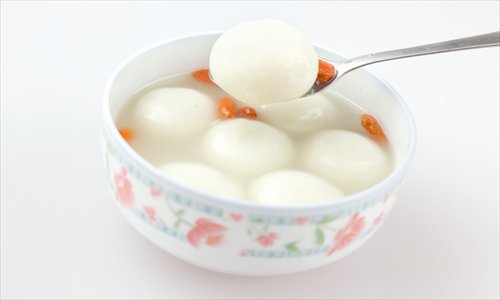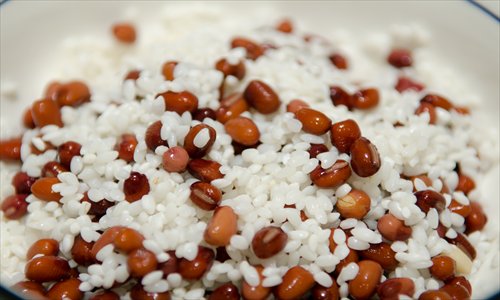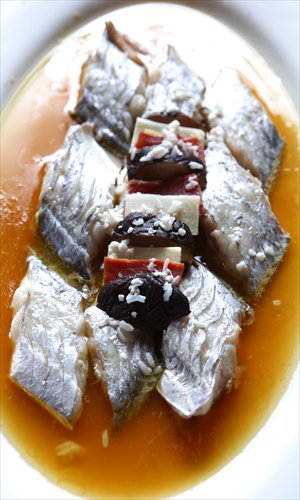Solstice soothers
Editor's Note
The ancient Chinese created an agricultural solar system - still in use today - that is based upon their observation of crops, climate, astrology, and the study of animal and plant life cycles. The system guided farmers as to when to sow seeds and when to harvest them, and this system has now been in place for more than 2,000 years.
Today, with advances in science and technology, agriculture depends less on this ancient wisdom. But this seasonal calendar still operates as a reference guide for gourmands to seek out the best times for seasonal delicacies and for health experts to plan nutritious diets.
In a single year, the system features 24 "solar terms," each lasting one day and occurring every two weeks. Each has its own name and characteristics. The Global Times is presenting a weekly series examining which foods and delicacies are best enjoyed during these periods, as well as tips on preserving general health.
With the sun setting earlier every evening, it is now only a matter of days until winter solstice on December 21, the shortest day of the year in the northern hemisphere and which is known in Chinese as dongzhi (peak of winter).
For Chinese farmers, dongzhi has always been an important time of the year. There are many popular sayings in different parts of the country which attempt to predict the coming year's weather based on the dongzhi. Farmers in Zhejiang Province, for example, believe that if it's sunny on dongzhi, it will be rainy during the first month of the lunar calendar in the following year; while if it's rainy on the same day, this first month will see many sunny days. Farmers in Hunan Province, meanwhile, hold that if it's warm on dongzhi, the following summer solstice will be cool.
Paying respect
Dongzhi is especially important among the 24 solar terms, and has been marked in China for thousands of years. The country's emperors once used the occasion to offer sacrifices to their gods, while citizens would pay respect to deceased relatives at their tombs, a tradition which survives to this day.
And people in different parts of China usually celebrate the day with food typical of their region. For instance, people in northern provinces such as Jilin, Liaoning, Hebei, Henan, Shandong and Shanxi, will eat jiaozi (a kind of dumpling) on the day. There is an old northern superstition that if people don't eat jiaozi on the day of dongzhi, they might suffer from frostbite if the weather is particularly cold. Steamed glutinous rice with small red beans and tangyuan (glutinous rice dumplings), meanwhile, have long been a popular favorite in southern China's river towns on dongzhi.
And courtesy of the Global Times, readers can enjoy their own special dongzhi recipe on this winter solstice.

Steamed glutinous rice with small red beans
Ingredients: 300 gram glutinous rice, 200 gram small red beans, 100 gram brown sugar
Method:
Wash the small red beans and steep them in cold water for 4 hours
Boil the red beans in water, and then simmer for a further 15 minutes
Scoop out the boiled beans into a bowl, mix with the brown sugar and then refrigerate the mixture
Steep the glutinous rice in water for six more hours - using the boiled water of the red beans is recommended
Scoop out the rice into a metal container and cover with the sweetened red beans
Steam the rice and red beans for 15 minutes
Stir the steamed rice and red beans and serve

Freezing winter temperatures are not good news for vegetable farmers, who often have to use greenhouses to cultivate their vegetables. Conversely, for fishermen, the winter can bring them some of the biggest hauls of the year.
And the hair-tail fish season in winter in the East China Sea provides one of the country's largest fishing harvests. Enjoying a bowl of warm hair-tail fish soup can be a great comfort during the winter and the Global Times has found an ideal recipe that is easy to prepare at home.
Hair-tail fish soup with papaya
Ingredients: 300 gram hair-tail fish, 15 gram black fungus, 300 gram small pork ribs, 300 gram papaya, 3 gram ginger slices, 2 tbsp oil
Method:
Peel the papaya, remove the seeds and cut into large chunks
Steep the black fungus in warm water for half an hour, and cut into small pieces
Heat enough water to submerge the pork ribs, add in the ribs and boil for one minute
Clean the hair-tail fish, make sure all the interior black part of the fish is removed, and then cut into 1.5 inch-long pieces
Heat the oil in a pan, and fry the fish and ginger slices on a low heat until both sides of the fish have turned yellow
Boil 1.5 liters of water in a pot, add in the ingredients and boil for 20 minutes, then simmer for another hour
Add salt to taste, and serve
